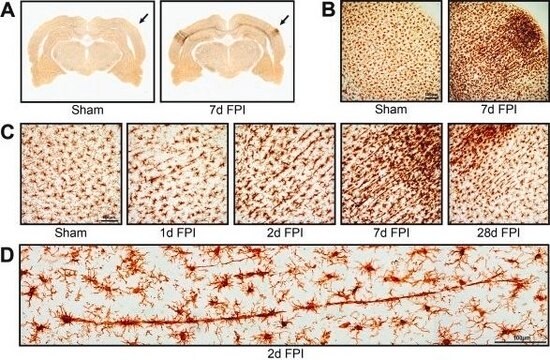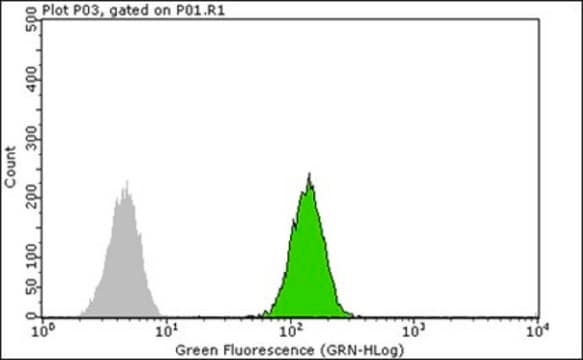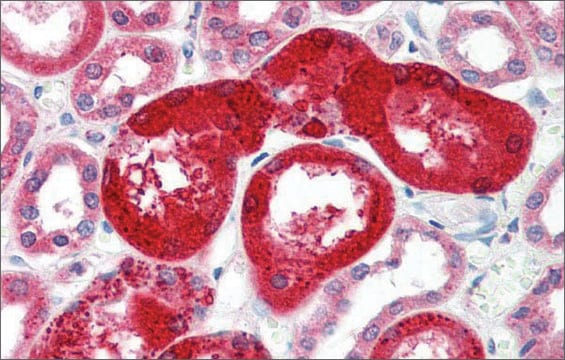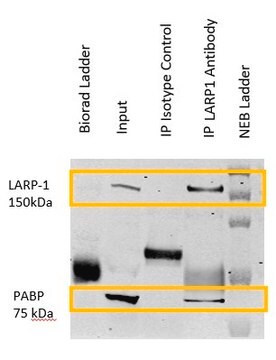MAB88916-C
Anti-Fibronectin (Cell Attachment Fragment) Antibody, clone 3E3, Ascites & Azide Free
clone 3E3, from mouse
Synonym(s):
Fibronectin, FN, CIG, Cold-insoluble globulin
About This Item
Recommended Products
biological source
mouse
Quality Level
antibody form
purified antibody
antibody product type
primary antibodies
clone
3E3, monoclonal
species reactivity
human
technique(s)
ELISA: suitable
immunocytochemistry: suitable
immunohistochemistry: suitable
inhibition assay: suitable
western blot: suitable
isotype
IgG1κ
NCBI accession no.
UniProt accession no.
shipped in
wet ice
target post-translational modification
unmodified
Gene Information
human ... FN1(2335)
General description
Immunogen
Application
Cell Structure
ECM Proteins
Immunohistochemistry Analysis: A 1:500 dilution from a representative lot detected Fibronectin (Cell Attachment Fragment) in human placenta and liver tissues.
ELISA Analysis: A representative lot detected the conformation of Fibronectin adsorbed onto self-assembled monolayers (SAMs) of alkanethiols over a range of Fibroectin surface densities (Kesolowsky, B. G., et al. (2003). J Biomed Mater Res A. 66(2):247-259.).
Immuncytochemistry Analysis: A representative lot detected Fibronectin (Cell Attachment Fragment) in Extracellular matrix deposited by HUVECs (Orecchia, A., et al. (2003). J Cell Sci. 116(Pt 17):3479-3489.).
Inhibition Analysis: A representative lot blocked cell-adhesive epitopes of Fibronectin (Cell Attachment Fragment) (Miller, D. C., et al. (2005). J Biomed Mater Res A. 73(4):476-84.).
Inhibition Analysis: A representative lot blocked RGD-dependent cell adhesion (Tsang, T. M., et al. (2012). J Biol Chem. 287(20):16759-16767.).
Inhibition Analysis: A representative lot inhibited the cell-adhesive epitopes of Fibronectin (Miller, D. C., et al. (2005). J Biomed Mater Res. 73(4):476-484.)
Quality
Western Blotting Analysis: 0.5 µg/mL of this antibody detected Fibronectin (Cell Attachment Fragment) in 10 µg of HepG2 cell lysate.
Target description
Physical form
Storage and Stability
Handling Recommendations: Upon receipt and prior to removing the cap, centrifuge the vial and gently mix the solution. Aliquot into microcentrifuge tubes and store at -20°C. Avoid repeated freeze/thaw cycles, which may damage IgG and affect product performance.
Other Notes
Disclaimer
Not finding the right product?
Try our Product Selector Tool.
Storage Class Code
12 - Non Combustible Liquids
WGK
WGK 1
Flash Point(F)
Not applicable
Flash Point(C)
Not applicable
Certificates of Analysis (COA)
Search for Certificates of Analysis (COA) by entering the products Lot/Batch Number. Lot and Batch Numbers can be found on a product’s label following the words ‘Lot’ or ‘Batch’.
Already Own This Product?
Find documentation for the products that you have recently purchased in the Document Library.
Our team of scientists has experience in all areas of research including Life Science, Material Science, Chemical Synthesis, Chromatography, Analytical and many others.
Contact Technical Service







